'American Horror Story: NYC' A Failed Mission to Save a Community in Crisis
In the early 2000s, my parents had a falling out, and we were forced to move from forested Oregon, where we had countless hiking trails and a jungle of temperate rainforest to explore, to rural Arizona, which hung somewhere around 105-110 F during the summertime. Everything was prickly, dusty, dry, and hot. Regardless of how high we cranked the air conditioner, which we had to sneak, we'd still feel like we were on fire. We were trapped in the house. We had nowhere to ride our bikes. All music was banned. We were told that our favorite TV shows were sinful, and we were shamed if we read books. Life was meant for work, picking up after the dog, shoveling gravel, mopping, vacuuming, scrubbing countertops, toilets, and dishes.
Church was absolutely mandatory. My grandparents attended the ultra-extremist Church at Safford, an ancient brick building with 70s shag carpet that smelled like sweat and tar. It was Sunday morning, Sunday night, Wednesdays, Thursdays, and Bible class on Tuesday nights. If we refused, we were told that we'd either be forced into the car, or the cops would be called, even if we were sick. We could puke in the tiny bathroom outside the sanctuary if it came to it.
There was an actual polygamist compound across the street, some neanderthal Mormon sect, not unlike the FLDS we've all heard so much about, but they weren't as stringent about their uniforms. Sometimes we'd see the kids working in their fields, moving from one row to the next in cheap Walmart jeans and plain, raggedly T's covered in the dust that seemed to collect everywhere. They weren't much different from the congregation, who seemed a little off. All of the women had stringy Brady Bunch mom hair, 90s rat tails, and country western outfits, complete with tassels, turquoise, and bolo ties. The men were usually dressed as cowboys, shell-shocked ex-soldiers, or a combination of the two. They'd have giant pistols on their hips, and those gigantic Peggy Hill glasses we've all come to associate with the elderly. The style was too pervasive. Normalcy was rare, and when it did show up, it was never fully complete--just a little more progressive than your average cattle rancher like, 'I know he ain't gospel, but I think it's OK to listen to a little Ted Nugent.' It was unreal to think that a hundred people like that could be condensed into a single room, but they were.
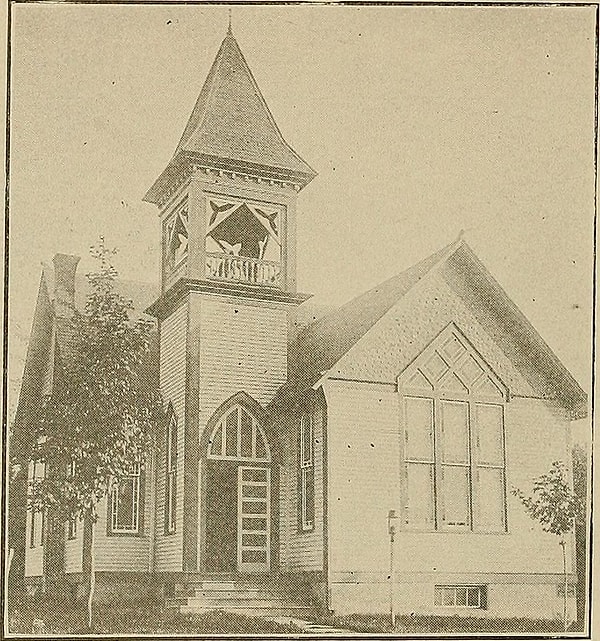
Courtesy of Internet Archive Book Images via Flickr
The pastor of Church at Safford was Dale Clontz. I remember because his wife's name was Gale, and we'd always get the two mixed up. He was terrible at praise and worship. Every Sunday morning at 8 o'clock sharp, we'd be forced to stand, sing, and clap to the same hymns from the 1960s. After about an hour and a half, he'd come running up on stage wearing a $1500 suit and a burgundy toupee.
His head would bob up and down rapidly of its own accord--a result of some medical condition he'd rant about--and his toupee would slip lower until the sweat on his forehead dried into an adhesive and glued it in place. He wasn't a particularly good public speaker. There was no overall message, just one random talking point after the next interspersed with things like 'Isn't He good?' or 'Glory, Glory.' It would go on for well over three, maybe even four hours, and there were those who complained about the time. He'd address it and tell people that if they couldn't handle God's word, there was the door. Everyone would shout out 'Amen' and nod their heads, and they'd feel so ashamed they'd keep coming and keep their mouths shut. There was a level of social influence and peer pressure. If people didn't come, the others would notice. You'd hear people talking about it, and after a while, someone would call them to find out what was going on. If they said they were leaving the church, or they were spotted at another church, they would lose all of their friends. Nobody would talk to them. Sometimes they'd get flack at work, lose their jobs, or their landlords would say something. The town was just that small, and Church at Safford was central to the community.
One Sunday, around the time I was ready to just run away rather than listen to another word the man said, I remember looking up from my Bible reading, watching Dale's head bob up and down, and he looked right at me, eyes squinted just a bit. '80% of homosexuals get AIDS and die. That is God's curse. That is his judgment on that community--that lifestyle, and if it happens to you, you have nobody else to blame except yourself and the Lord.' Imagine being 13 years old, sitting in church, and having 300 people dressed like Jeff Foxworthy turn back to glare at you. The shame, the anger--the fact that I was completely trapped and forced to attend for 2 more years--that would've had an impact on anybody. Everyone knew that he was talking about me. My mother had trouble finding work. People wouldn't rent to us. The kids at the Christian High School would tease me and beat me, and it didn't stop with the children. It extended to teachers, staff, the pastor's family--everyone connected to the church. I didn't even know I was gay.
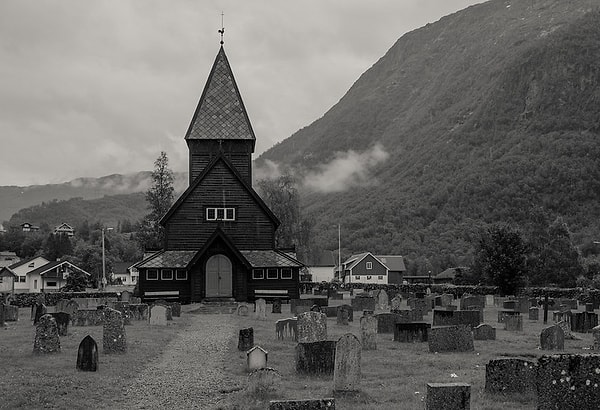
Courtesy of astrid westvang via Flickr
Crisis and Mistreatment
I later learned that Pastor Dale's ridiculous 80% statistic was off by magnitudes. By the mid-90s, when the disease was still ravaging the community, something like 11% of homosexual men were diagnosed. Around that time, straight couples in racial minority groups were the main spreaders. Pastor Dale was mirroring the rhetoric that was blasted on television screens and radios all throughout the 1980s, when the AIDS crisis was at its peak. When the virus hit, the LGBTQ+ community had already made great strides, passing non-discrimination laws in several states, giving employees and tenants the right to sue if they felt like they were rejected due to sexual orientation.
On the national level, there was a massive campaign on the right to stop these types of laws from making it on the books. The first--which also marked the first major push against the gay rights movement--was a campaign named Save Our Children, which operated out of Florida. It was led by Anita Bryant, a singer, who claimed that the anti-discrimination law went against her right to teach her children Biblical morality. How that connects to refusing someone jobs and housing is anyone's guess, but it worked. The law was repealed with a whopping 70% of the vote. Around this time, Jerry Falwell, who was largely credited with putting Reagan in place, was undergoing what he called the 'I Love America' tour, a series of rallies which he used to unite the public under certain issues that he considered pivotal to the moral decay he was seeing around the country.
When the AIDS crisis struck in 1981, he had already built the Moral Majority, an interfaith coalition that he claimed to be 'pro-life, pro-traditional family, pro-moral, and pro-American.' In other words, they didn't like gay people or women. Falwell's ultimate goal was to twist the message in churches so that he could convince the masses to vote however he wanted them to vote. This was a segregationist who spoke out against Martin Luther King Jr. He even built an all-white grade school along with an academy, so parents wouldn't have to send their children to public schools with black kids. He was the dominant voice during the AIDS crisis.
'AIDS is not just God's punishment for homosexuals; it is God's punishment for the society that tolerates homosexuals.'
- Jerry Falwell Sr.
Falwell was slick. He ran a show called the Old-Time Gospel Hour, which ran from 1956 to the early 2000s. He wasn't openly racist. Instead, he invited segregationist politicians to stand at his pulpit and speak. He didn't speak out about MLK JR.'s message, he said that there was something he didn't like about the guy. He didn't think people would swallow everything he had to say, so he added in little hints with a wink and a smile, and the congregation would laugh. They knew what he was talking about. But with gays, he was balls-out. He knew that he could get away with a lot more. He went on television all the time to say that AIDS was God's curse on homosexuals, that it was their fault, a result of sin, and that other STDS, like herpes, was God's curse for heterosexual promiscuity.
As one of the leading pastors in the nation, Falwell was able to get churches everywhere to mime his message, spreading lies and shame to those who were on their deathbeds. Imagine being in a situation where you know you're going to die. Your body is literally falling apart, and the entire world thinks it's your fault. That was the climate we saw in the final two episodes of AHS:NYC.
When Gino enters Patrick's room, where he is staying, there's trash piling up. There's no water at his bedside. He tried to call for someone to help them, and nobody came. His IV bag was empty, and there was no evidence that he was being fed. This is all taken directly from hospital scenes that occurred into the early 90s. Medical staff would either refuse to admit them into the hospital, or they'd tape up a door to keep the disease from spreading through the hall and leave them to die. This was largely due to anti-homosexual bias and superstition. At the time, the virus was known as the gay-related immune deficiency, or GRID. Doctors would brag about their refusal to treat it, and many said that it was their moral right to refuse them care, believing it to be God's curse for their sin. They used all sorts of excuses from hangnails to misinformation to defend their stance. This sentiment was mimed by hospital administrators, nurses, and even housekeeping staff. When they would agree to help them, they would wear full-body suits, like the one we saw on the show, and check on their patients infrequently. Many died from starvation, malnutrition, and dehydration, and their loved ones were barred from seeing them if they weren't relatives. People died in their own filth, covered in bed sores.
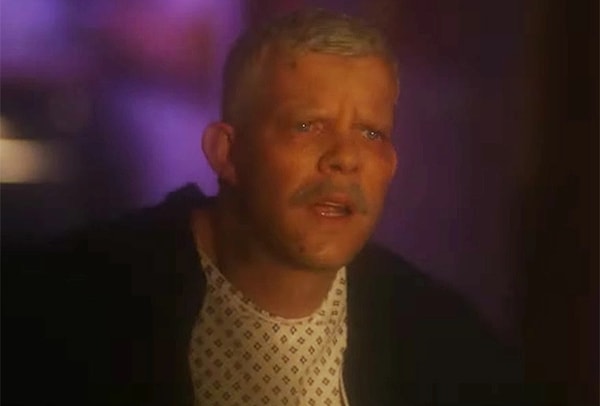
Courtesy of Hulu
It's difficult to imagine a world where some fire-breathing televangelist could coerce hospital staff into neglecting their patients. But that was exactly what happened. In 1988, out of the 25,000 available physicians in Manhattan, the Gay Men's Health Crisis knew of only 45 that were willing to treat HIV/AIDs patients. It was said that less than 5% of hospitals cared for more than half of the nation's AIDS patients. It wasn't a lack of scientific understanding. Doctors knew quite quickly that the virus was sexually transmitted, not airborne. Within the first year, that was the general consensus. It was discovered in 1983 that heterosexual couples could transmit it as well, but most people believed that it was completely confined to gay men.
In San Francisco, when they realized what was happening, administrators mandated proper care. They knew that the patients felt unloved, that they were being neglected, and that hospital staff were laughing behind their backs, drawing straws to see who was going to hand them their food--which quite often didn't happen at all. They created ward 5B at San Francisco General. They knew that the patients were dying. Some would come into the hospital ready for hospice care. There was nothing they could do about that, so they decided to make them comfortable. They mandated that all of the workers needed to take off their masks, their body suits, and gloves, touch them, talk to them, and listen to them. They even snuck in pets through the back door.
When hospital workers refused, they were punished, and many of them did refuse. There was homophobia. People said that they didn't want to work with gays. They didn't feel like they needed to provide care to them, and they went on about the possibility of transmission. Some of the workers sued and won, because nobody was willing to accept the truth about how the virus was transmitted, and Falwell and the others were intentionally spreading lies about it. They'd take pictures of themselves with masks on. They'd tell people to stay away, warn them against talking to homosexuals, and then they'd add sin into the equation. Blame became a huge driving force in the discourse around the virus. There were a lot of people who simply wanted patients to wallow in it.
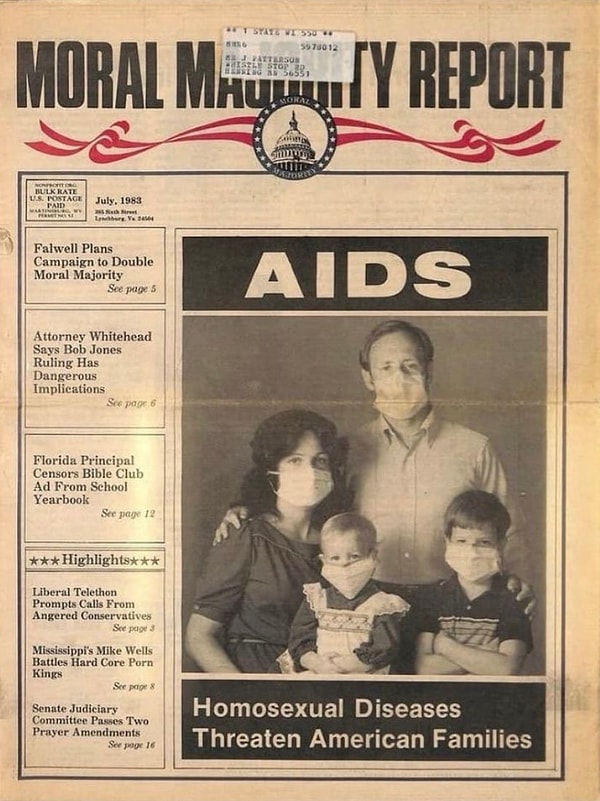
Courtesy of MattXIV via Twitter
We Let The Die
One of the major themes in the new season is the drive to do something, organize, fight, and protect the community. It was unbelievably frustrating because they were so desperate and so worried, and so many people were dying, but there was nothing they could do. Nobody would listen to them. Gino would write furiously, struggling to get the word out, while Adam hung up posters, and went around telling everyone what was going on. Dr. Hannah Wells worked alone with zero assistance from the medical community and Patrick fought for support from police who practically used gay men for target practice. Every single detail was taken directly from history and twisted just a bit for entertainment value. The basic idea was that in general, when it comes to gay people, nobody wanted to listen, and the system that most of us fall back on in times of hardship--the police, doctors, and hospitals--completely failed the LGBTQ+ community.
It began with the media. In the early 1980s, there were a lot of unwritten rules in the world of print journalism, and one was that you weren't allowed to write about homosexuals. There was a sort of childish accusatory attitude that came with it, something you'd expect in a high school locker room, not in a room filled with mature adults. In 1982, a year after Reagan was elected, Lester Kinsolving asked the president's Press Secretary, Larry Speakes, about the AIDS crisis. Everyone in the room laughed like children. Larry confronted Lester, trying to bait him into saying that he himself had been infected, which of course was not the case. It was like talking to the quarterback at Valley High. No matter what Lester said, he'd get teased. People were shaking their heads, trying to humiliate him, whispering, giggling. It's reflective of a society that was far too ignorant and far too prejudiced to address such a thing. Bringing up anything regarding homosexuality in a public space, especially the White House briefing room, was considered unacceptable. It just wasn't talked about, and it made people uncomfortable. This attitude permeated every aspect of life. It occurred in the doctor's office, the courtroom--literally everywhere.
How could people possibly address this in a culture that didn't even want to say the word 'gay'? Nobody wanted to get tested. They didn't want to wear condoms. Doctors didn't want to give out tests. They didn't want to talk about it. You'd have to drive hundreds of miles to see the one specialist willing to see you. The epidemic spread widely because of this, especially with men, because many of them wouldn't be caught dead in a testing center. They didn't want to admit their identity. They didn't want to be seen in public somewhere where people could see them. They did their business in the darkness, forgot about it, and went about their daily life. If they were outed, they could lose everything, their jobs, their home, their loved ones, and their marriages--their children. The system was set up to punish and shame gays. People did not out themselves--ever, and seeking treatment could mean getting outed
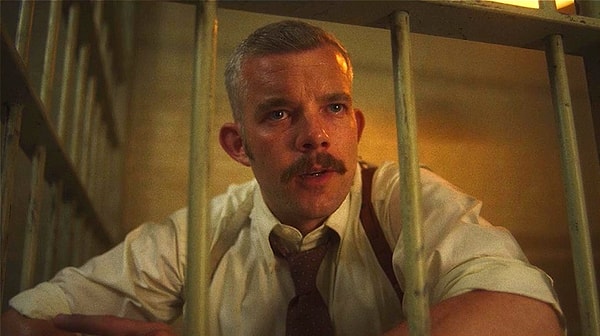
Courtesy of Hulu
In the political arena, HIV/AIDS was used for one thing: uniting the right. Jerry Falwell Sr.'s rhetoric and his coalition, the Moral Majority, worked tirelessly to spread hateful rhetoric, while they rallied evangelical support around Ronald Reagan. They came up and gave speeches calling him anointed by God. They said that he was going to be one of the greatest presidents since Abraham Lincoln. They had millions pouring into political ads, sermons, praise and worship services, mailers, and billboards. Reagan's face was everywhere, and Falwell was always behind him.
The entire time--even in the early days of the epidemic--the men around Reagan were shouting about AIDS, shaming dying men and women. Pat Buchanan, Reagan's Communications Director, said that gays had declared war on nature and that AIDS was nature's retribution against them. But Reagan remained silent. He would not even say the word, no matter how much he was pressured to do so.
In 1982, Congress held their first field hearing about research for scientific funding. It was a shit show, to say the least. Republican Rep. Bill Dannemeyer of California stood up and gave a speech called 'What Homosexuals Do,' where he gave graphic descriptions of sex acts to shame them and deter anyone from voting in their favor. If any representative was seen saying 'yea' they would be suspected of homosexuality--which was always a fear--associated with things like rim jobs, and ultimately thrown out by their constituents. It was a threat framed as a demented sex-ed course, and it came along with a proposal for a registry, quarantines, and deportation. One of the main barriers to finding also came from Rep. Dan Burton, who spread the fear of contracting it, along with a whole host of Senators and House Representatives on the right who were using the talking point that 'AIDS is not a no-fault disease.' Imagine hearing that on your deathbed.

Courtesy of Hulu
With research funding neglected, a refusal to provide care from nearly every doctor in the country, and a skittish press it's no wonder AIDS spread as quickly as it did. Reagan was a serious problem. He openly criticized the health budget and the UN's WHO, who he refused to support with funding for the disease, and he made it difficult for the one tiny piece of legislation that was passed to act on the problem. But he was Hollywood, very Hollywood, and so was Nancy Reagan. They were never actually Evangelicals as Falwell suggested. In fact, his opponent in the race, President Carter, was the Evangelical. Reagan was an actor on his second marriage.
They had homosexual friends. Nancy's decorator and his partner slept in the White House. They seemed comfortable around them, and they weren't secretive about it--though Reagan did act like a straight man of his time. He'd make limp wrist jokes, do imitations, and use slurs. That was known, but it was mostly in private and mostly playful. They were also quite aware of the epidemic and its rise in New York. Most of their knowledge about it was tainted with fear and superstition, much like the rest of the public at the time. Once she accidentally took a sip from her hairdresser's water glass, and she ran to their doctor, asking him to make sure that she didn't have AIDS. This might seem like petty bigotry, but at the time people didn't understand it. There was so little education and quite a bit of superstition. When she saw the disease and people suffering from it, she started trying to influence her husband to get him to act. It was very much like a mid-century wife trying to convince Archie Bunker, make him feel like it was his idea, all of those things, but Ronald was not the problem.
The Reagan White House was infested with extremist conservatives who had all sorts of strange ideas about the epidemic. They were obsessed with creating a registry, and even tattooing people who had the disease. It didn't take long for people to realize that it could be spread with needles, so 'those people' were added on to the list of untouchables. One of Reagan's advisors wanted to tattoo needle addicts on the forearm and gay men on the buttocks, shaming them after their diagnosis. They were very concerned with outing people, making sure their status was known, and they wanted to control the message. They planned to rollout mandatory testing and label all of the gays and addicts to make them pariahs and protect the public, and they refused to entertain actual research or sound scientific knowledge on the subject. Anything to do with contraceptives was basically triggering for them. They believed that the conversation about AIDS needed to be centered around morality, not health. Reagan's medical staff couldn't get a word in edge-wise. They had to work their way around the conservatives and even act in secret. They quietly sent out reports about the virus, hiding them from the president and others, to avoid having them censored. Reagan seemed to be caught in the middle of all of this, pulled in different directions by different people. He did believe that homosexuality was a sin. He didn't support it, but he did want a sensible strategy.
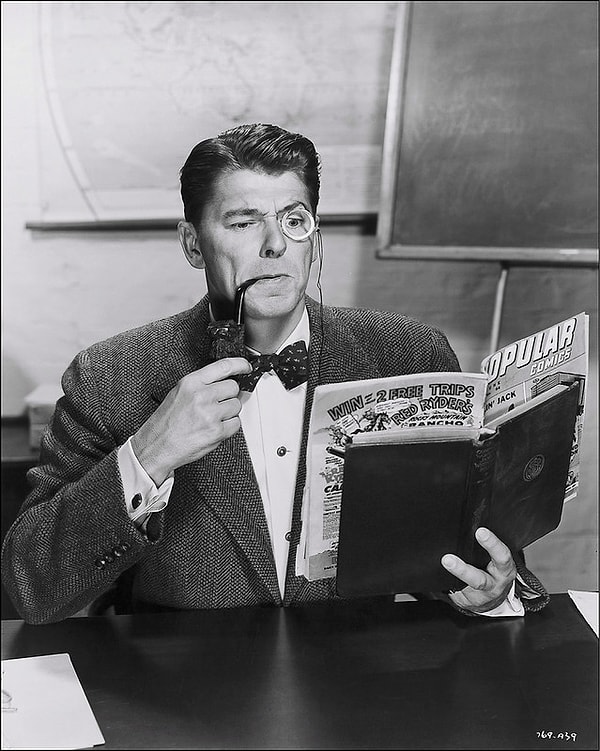
Courtesy of Hulu
The epidemic went on for 4 years. There were more than 16,000 reported diagnoses in 1985 when Reagan finally fielded a single question about the disease. It was the first time he actually said the word 'AIDS' in public. He called it a national priority and defended the administration's efforts to fund research. He had a major epidemic on his hands. His wife and now his son were pressing him and pressing him, doing everything they could to get him to address it, and he gives one question to a report; that's it--all while fascists were whispering in his ear. This dynamic killed people. His silence killed. His refusal to address and support a dying community killed, and everyone involved knew it, but they were more concerned about his moral standing, what it would mean to support homosexuality, and whether his actions would support intravenous drug users. They weren't willing to see the truth, and the public suffered because of it.
This was all in the midst of societal upheaval, pastors raging, protesters swarming buildings, and messages blaring across TV. Reagan let people lie. He let all sorts of debate play out in Washington. He saw protesters outside the White House gates. He knew what was happening, and he said nothing because his side was wrong, and he wanted to straddle the fence. He issued a token address in 1986, a full year after the one question he was willing to field, which included an order to have his medical team issue him a full report. It must've been infuriating, basically having him say with an urgent tone, 'We're taking this seriously. I will look into it.' Immediately he said that he slashed AIDS research. It set off a firestorm at home, in the White House, and on the streets. His son made a commercial to criticize him. His wife set about trying to fix what he had done. People started lobbying him, while the conservatives pushed for their testing and branding agenda. Meanwhile, his medical staff was quietly planning their own revolt, producing publicly disseminated--and very well-researched material--that set off the sex-ed debate many of us saw during the 90s.
Things went on this way for quiet some time. Reagan, to his credit, did try to help things. There were inroads made, but it was on top of body and after body after body--constant pandering to extremists. He dug his heels in every step of the way. He did refuse to blame gay people. But he also refused to mention them when he finally sent his well-wishes out to the dying.
This is the world that cynical Gino walked through during the finale. It was no wonder that he was bitter, upset, jaded, and completely livid. They made him that way because he reflected what gay men must've felt during his time. The fact that everyone involved could leave these men and women to die, while shaming them, laughing at them, and plotting against them, is a testament to why Ryan Murphy keeps coming back to this time, why it shaped him, and why he worked so hard to get to where he is. We need to learn from this. Many of the players involved are still around, still influential, and still able to sway the public. Falwell's institutions are still alive and kicking. Fauci, who worked to spread the word on contraception and AIDS research is still highly relevant. The superstition and the potential for bigotry and cruelty are still very much alive.
Keşfet ile ziyaret ettiğin tüm kategorileri tek akışta gör!

Send Comment